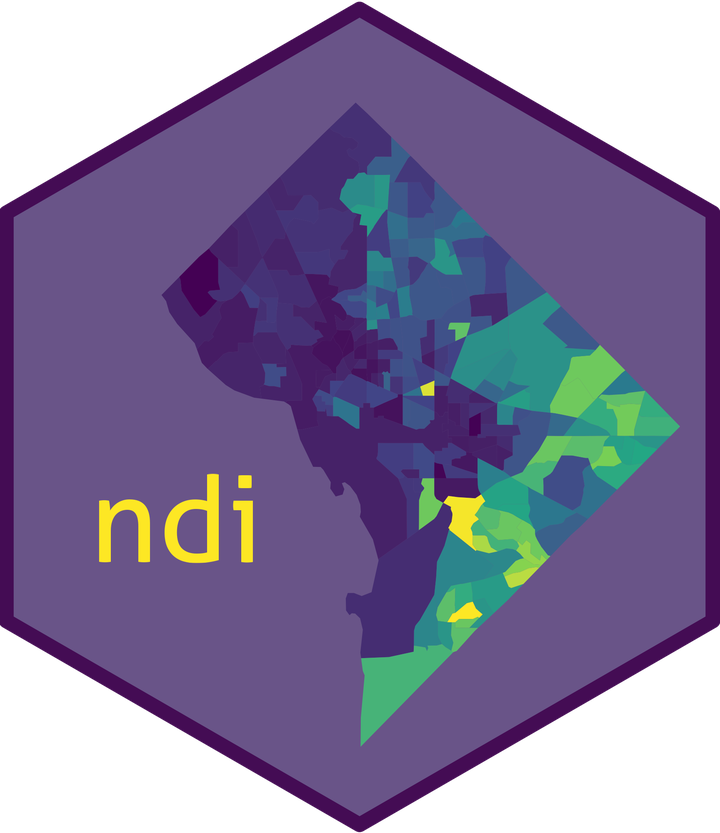New CRAN Package {ndi}
 Image credit: Ian Buller
Image credit: Ian Buller
My fourth R package is published in the Comprehensive R Archive Network named ndi. It computes various geospatial neighborhood deprivation indices (NDI) and other metrics of social vulnerability in the United States.
Two types of NDI are available in the initial version:
- based on Messer et al. (2006)
- based on Andrews et al. (2020) and Slotman et al. (2022) who use variables chosen by Roux and Mair (2010).
Both are a decomposition of various demographic characteristics from the U.S. Census Bureau American Community Survey 5-year estimates (ACS-5; 2010-2020) pulled by the tidycensus package.
Update - 2022-08-15: The package computes two additional metrics using ACS-5 data (2009-2020) that account for values in nearby (i.e., adjacent) census geographies (i.e., census tracts or counties):
- the spatial Racial Isolation Index (RI) based on Anthopolos et al. (2011)
- the spatial Educational Isolation Index (EI) based on Bravo et al. (2021)
And retrieves the Gini Index based on Gini (1921).
Update - 2022-08-18: The package link was added to the NCI GIS Portal for Cancer Research Accumulating Data to Optimally Predict Obesity Treatment (ADOPT) Core Measures Environmental Domain site under the “Socioeconomic Deprivation” tab.
Update - 2022-10-01: The package computes an additional metric using ACS-5 data (2009-2020) to compute the Index of Concentration at the Extremes (ICE) based on Feldman et al. (2015) and Krieger et al. (2016)
Update - 2022-12-01: The package computes an additional metric using ACS-5 data (2009-2020) to compute the Dissimilarity Index (DI) based on Duncan & Duncan (1955)
Update - 2023-02-01: The package computes two additional metrics using ACS-5 data (2009-2020):
- the aspatial income or racial/ethnic Atkinson Index (AI) based on Atkinson (1970) for specified counties/tracts 2009 onward
- the aspatial racial/ethnic Isolation Index (II) based on Shevky & Williams (1949; ISBN-13:978-0837156378) and Bell (1954)
- the aspatial racial/ethnic Correlation Ratio (V) based on Bell (1954) and White (1986)
- the aspatial racial/ethnic Location Quotient (LQ) based on Merton (1939) and Sudano et al. (2013)
- the aspatial racial/ethnic Local Exposure and Isolation metric (LEx/Is) based on Bemanian & Beyer (2017)